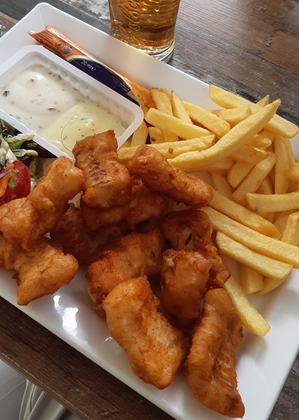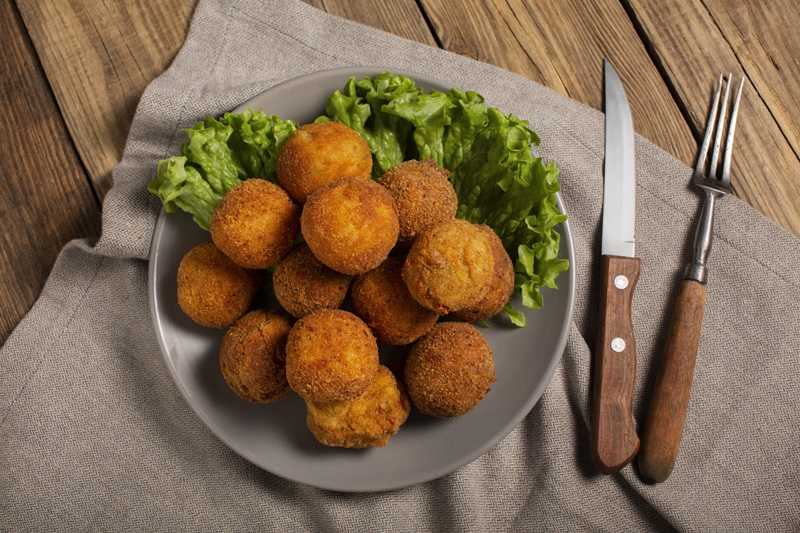Dutch cuisine isn’t particularly sophisticated. The staple in the Netherlands is nutritious, uncomplicated dishes of fishermen and peasants. When working abroad, it’s a good idea to look out for local specialities that you can taste on your days off. Of course, some people aren’t keen on culinary experimentation or fear that new flavours won’t be to their taste. As far as the Netherlands is concerned, they can rest assured – traditional Dutch cuisine is nutritious and somewhat reminiscent of the kind of cuisine that people who come from central and eastern Europe are accustomed to.
Traditional tastes of Dutch cuisine
You could say that Dutch cuisine is a bit of a mystery, as it’s difficult to find here a dish that’s world-famous unlike in Italian, Polish or French cuisine. For centuries, in terms of culinary habits and traditions, the Dutch have taken what nature has offered and turned it into simple dishes that had to guarantee satiety. Nevertheless, the cuisine of the Netherlands is diverse, abounding in many different and interesting flavours, which means that there’s something for everyone.
Dutch breakfast
The first meal on a typical day of a Dutch person is substantial and hearty. The most common breakfast consists of bread with cheese, washed down with tea. However, richer options are also popular. Depending on your taste, you can find a large selection of ham types, eggs prepared in different ways, or a variety of bread products. Rolls or bread are often topped with extra ingredients: raisins, sugar, chocolate, candied fruit, liquorice, etc. Wheat white bread is often sprinkled by the Dutch with the characteristic chocolate granules (hagelslag, see below), which in other countries are used to decorate cakes and pastries.


Dinner in the Netherlands
When going to the Netherlands, it’s important to bear in mind that the main meal there is had much later than in most of the central and eastern European countries – around 6 p.m., at a time when we would rather start preparing for supper. Consequently, the meals the Dutch have in the evening are very substantial and hearty. Sometimes they even consist of three courses. Soup is usually the first to be put on the table, followed by the main course, often in the shape of a one-pot dish. And finally, fruit or oatmeal is still eaten. The Dutch have a special love for one-pot dishes – cheap, simple to prepare, very filling, and originating from peasant cuisine. They may not look very attractive, but they are tasty and interesting in terms of ingredients. They also have the advantage of being hardly difficult to make, as Dutch recipes are easy enough for anyone.
Traditional Dutch dishes
The staple of the Dutch people’s diet – to the delight of many residents of central and eastern Europe – is potatoes, as well as vegetables and meat. Does it sound familiar? Yes, many of us have very similar eating habits. Considered the world’s snack masters, the Dutch have a great love for potatoes – one that has never died out. A favourite form of these is Dutch chips served in a variety of ways. Most often baked twice, soft inside and crispy outside served with many sorts of sauce, salt, mayonnaise, ketchup, or onions. Specialities include friet saté with a spicy peanut sauce and friet special with a mixture of mayonnaise, curry, ketchup and – most importantly – chopped raw onions. Another kind of potato-based staple that’s a must-try in the Netherlands is the many one-pot dishes called stamppot. Most commonly, these are boiled mashed potatoes with other vegetables, traditionally served with very heavily fried bacon and sometimes also brown jus sauce, made from melted butter or other fat in which meat was previously roasted. This combination is often served with a ball of minced meat – gehaktbal. There are many varieties of stamppot, and it is particularly common in winter to add kale to the potatoes – you then get boerenkool stamppot, often with smoked Dutch sausage (rookworst) instead of bacon. Among the soups worth trying is one made from brown beans (bruine bonensoep), the queen’s soup (koninginnesoep) made from chicken, flour, and cream, and the thick, nutritious one cooked only in winter and made from green or shelled peas – erwtensoep. Cheese soups are also very popular. When it comes to meat, the Dutch are particularly fond of beef, although there’s also no shortage of pork and poultry dishes. Another traditional Dutch dish is klapstuk, or braised beef brisket, which is served with hutspot (messy pot) – a dish made from mashed (of course) overcooked potatoes, carrots, and onions, as well as hache, a sort of Dutch stew, and stewed beef (draadjesvlees).
Traditional Dutch sweets
The Dutch have a sweet tooth – they just love sweets and drink a river of coffee. Dessert (toetje) is a very important part of their dinner. One of the most popular Dutch snacks is the sweet stroopwafel, which is two pieces of wafer joined together with syrup. Served cold, hot, small, or large, with hot coffee or heated in the microwave, it’s an iconic sweet staple. Sometimes the Dutch have a simple pudding or fruit, but their favourite sweet treats are:
- apple and cinnamon pie, served hot (appelgebak);
- pancakes with syrup (pannenkoeken);
- mini pancakes with icing sugar (poffertjes);
- pancakes with fruit or raisins, of various flavours, obligatory on New Year’s Eve (oliebollen);
- sweet, whipped egg white foam with added fruit syrup (haagse bluf)
- various types of sprinkles, usually eaten with bread, enjoy a great deal of popularity in the Netherlands.
Dutch specialities
When visiting the Netherlands, you must try the most popular Dutch delicacies:
- herring (maatjesharing or Hollandse Nieuwe) – usually one-year-old, not too salty, very tender, and traditionally served with raw onions and pickles – mostly sold at street stalls, served whole or cut into smaller pieces and sometimes sold with a sweet wheat roll (haring broodje);
- hard yellow Dutch cheeses – a variety of types. Their ingredients include mustard, cumin, cloves, chilli, basil, mustard, etc., and their names are usually linked to the place where they are sold – the most popular are Edammer, Gouda, Maaslander, Leerdammer, or Amsterdammer. Apart from the various ingredients, they also differ in degree of maturity: jong, jongbelegen, belegen, extra belegen, oud, and brokkel kaas, with jong meaning delicate, belegen meaning intense, and oud meaning pungent;
- bitterballen – fried and breaded meatballs made from beef or veal ragout, a popular snack to go with to cold beer. Most often served still hot with mustard;
- kibbeling (see below) – one of the most widely enjoyed Dutch snacks: small pieces of fish (usually cod) served with sauces, chips, and salad;
- raw sausage called ossenworst – reminiscent of tartare, made from beef. It’s usually served with mustard and additional spices;
- snack masters very often serve croquettes. However, they are different from the classic ones; they are encased in a thicker coating and sprinkled with oats or bran. Also, different sorts of filling are used: meat, cheese, or vegetables. They are often served on a roll or a slice of bread;
- frikandel – minced meat sausages served with rolls, chips, or on their own.


Dutch customs
Traditional Dutch cuisine with drinks and food served on special occasions. On the national holiday of April 30, the Queen’s birthday (Koninginnedag), very sweet orange vodka (oranjebitter) is drunk. Christmas is a time for sweet cakes: kerststol, which is a white roll with a generous filling of raisins, almond paste, and dried and candied fruit. Other popular baked goods are kerskransjes, or almond cookies also used to decorate the Christmas tree, and kerstkrans, a puff pastry with almond filling. A drink made from wine, citrus fruits, and the roots of various spices is served during the Saint Nicholas Day evening on December 5. And on New Year’s Eve, fried apple rings (appelbeignets) and the popular oliebollenapple doughnuts are consumed. The Netherlands means a wealth of many flavours and traditional dishes, so browse the job offers available in the Netherlands, choose yours and go there to work as well as experience the taste of Dutch cuisine.
















